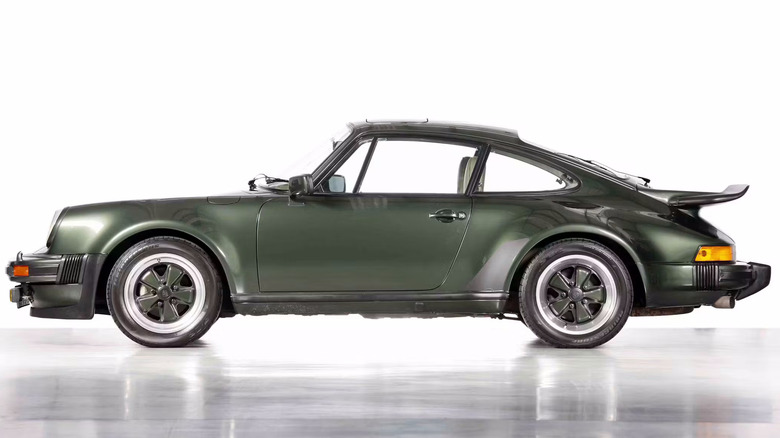Which Porsche Model Is Called The Widowmaker & How Did It Earn The Nickname?
Dictionary.com defines a widowmaker as "something having the potential to cause sudden loss of life," and goes on to give examples such as a tree limb falling or about to, or a left coronary artery that's clogged. The word also makes a cool name for a video game character, but it's not one an automaker wants attached to one of its vehicles — especially a new release. Could be bad for sales.
Back in 1974, Porsche debuted its newest update of the 911 at the Paris Auto Show. This was the first production 911 with a turbo, which boosted its 3.0L flat six to pump out 256 horsepower and paved the way for a broader acceptance of turbochargers in cars. With the turbo differentiating it from earlier 911s, the car became known as the 930, and was the fastest German production vehicle at its unveiling. It was fast. It was unruly. It had no antilock brakes. And it wasn't too long before the Porsche 930 picked up another name, based on the way its handling caught unprepared drivers by surprise: the Widowmaker. Or as they say in Germany, Witwenmacher.
How did it earn the nickname?
In a 1980 lawsuit brought against Porsche for a fatal wreck in a 930, the plaintiff's lawyer produced a secret document allegedly from within Porsche's ranks. It included a quote from the car's development driver, who called the vehicle's driving response "poisonous."
This wasn't the first iteration of 911 called out for interesting handling characteristics. While every generation of Porsche 911 has its pluses and minuses, 911s that preceded the 930 era were also famous for sliding out of corners. This "lift-off oversteer" happened when drivers feared they were hitting a corner too fast, and took their feet off the accelerator, which reduced torque and — super important — grip with the back tires. With the engine weight in the back, a little rear slippage suddenly gave the whole car a spin. Others blame oversteer on the semi-trailing-arm rear suspension, which caused a change in rear-tire camber as a driver backed off acceleration.
Porsche's 930 addressed the issue with a wider rear end and iconic whale tail. But 930 drivers also contended with turbo lag instead of smooth acceleration. As the rpms hit the 4,000 boost threshold, the turbo caused a sudden, aggressive acceleration that caught drivers off guard in the middle of a corner, or on wet pavement. See sliding description, above.
Modern tires and more driver experience with turbos and speed have made the 930 less of a menace. Today, it's even regarded as one of the best turbo cars.

